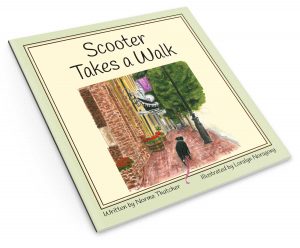 For many years I have found the subject of the mind/body connection fascinating. One of the original books on the topic that hooked me goes back to 1987. Minding the Body, Mending the Mind by Dr. Joan Borysenko is still applicable all these years later. In fact, I include the book as suggested reading to my public speaking students.
For many years I have found the subject of the mind/body connection fascinating. One of the original books on the topic that hooked me goes back to 1987. Minding the Body, Mending the Mind by Dr. Joan Borysenko is still applicable all these years later. In fact, I include the book as suggested reading to my public speaking students.
So I was thrilled to find in a new book I’m currently reading (Successful Aging by Dr. Daniel Levitin) that the author has a strong focus on the mind/body connection as it relates to aging well. Dr. Levitin (62) is a neuroscientist and cognitive psychologist. I appreciate that instead of relying simply on his own work and own opinions for the book, he reviewed around four thousand peer-reviewed scientific papers.
One phrase that popped out at me in the section on exercise is embodied cognition. Basically our brains thrive on our body’s physical movement. Our memory, problem-solving skills, planning abilities, creativity, and thinking are enhanced by physical activity.
Note that “physical activity” doesn’t necessarily mean becoming a gym rat or taking up running. (Unless those activities bring you joy. Or unless you’re Julia “Hurricane” Hawkins who took up competitive athletics at age 75 and then at age 100 moved on to running. At 101 she won the hundred-yard dash in the National Senior Games.)
Physical activity can be as simple as moving around, interacting with the environment.
Dr. Levitin says the true meaning of embodied cognition came as an epiphany to him when he went for a walk in the Quebec countryside with two 70-ish friends. The path was a dirt trail through the woods. They meandered over tree roots, rocks, and fallen branches. They had to negotiate around young children running along the path as well as duck those pesky low-hanging branches.
It struck him that he had to carefully watch where he walked, making sure that foot placement was just so. Compared to walking on a treadmill or strolling on a nicely paved sidewalk (both beneficial movement), walking outdoors, he believes, is the best physical activity to keep the brain active and flexible.
It turns out I had intuitively already made this part of my routine. While walking my dog Grace along a creek at a local park, we negotiate our way among humongous tree roots. Then we go off the path to mount the small hillside so Grace can sniff out the fence line adjacent to a cow pasture. We make our way through an uneven terrain of pine needles, pinecones, dead leaves, twigs, fallen tree limbs, and rocks on the park’s opposite side. For once I am ahead of the curve for health recommendations!
I think everyone over 60 and their adult children will benefit from reading Successful Aging. While the book (at 400 pages not counting the 74 pages of NOTES) can at times read a bit too much like a textbook, it’s thoughtfully written. It’s not a list of DO THIS / DON’T DO THIS bullet points, nor does Levitin try to shock readers with DO THIS OR ELSE! predictions.
Instead, the pages are filled with interesting science-based material and gentle nudges for readers to incorporate the key concepts into their daily lives in order to live a longer, healthier, and enriched life.
The book also provides the information our adult children need to understand this new stage of life we parents are living through, such as why we grow accustomed to things the way they are. For instance, the challenge of a new cell phone doesn’t arise because someone has turned 72 and suddenly grown stupid. It’s because of changes in the brain that make learning something new more difficult as well as make our fingers less dexterous.
This is a book that will bring a better understanding among our family members, and so it is well worth the 400-page read.
~~~~~




dearest Norma,
That sounds great! And we have plenty of time to read now!
Hope you are staying well and keeping your distance.
Greg and I walked in the park in Marshall, What a lovely place with few visitors.
I think Grace would love it!!!!
Judy
Thanks so much Norma. I really appreciate your blog.